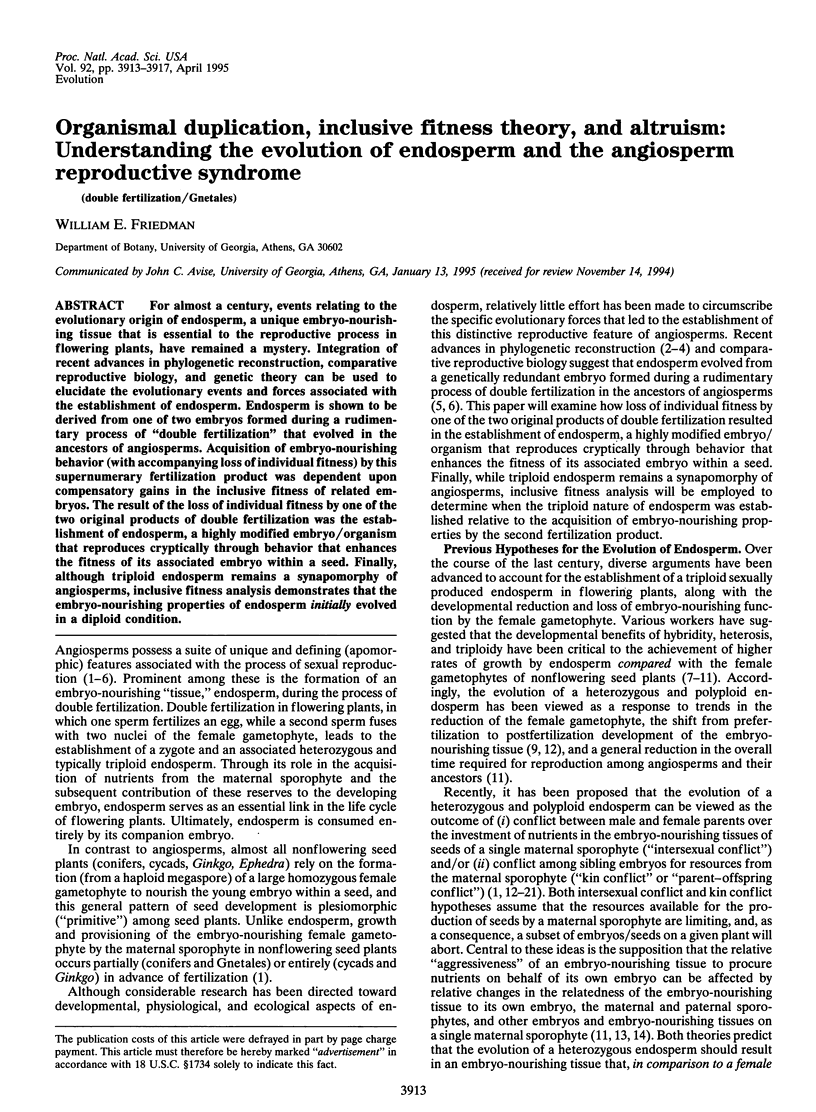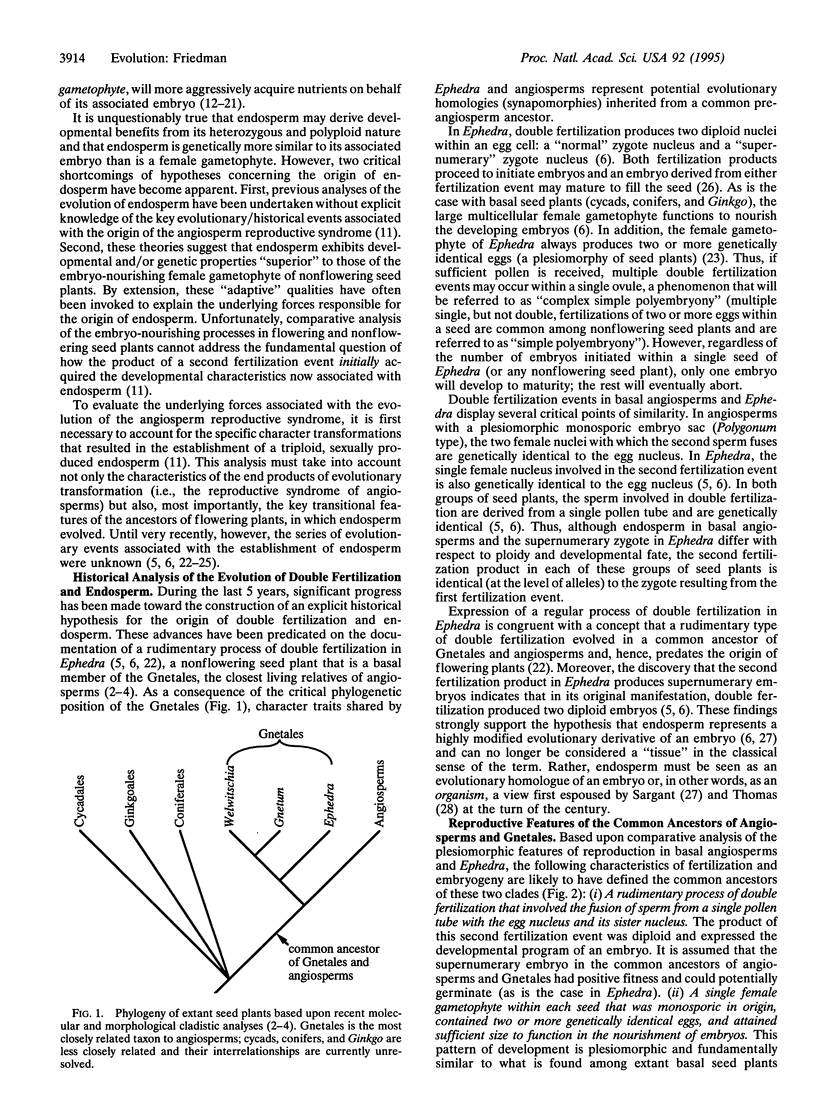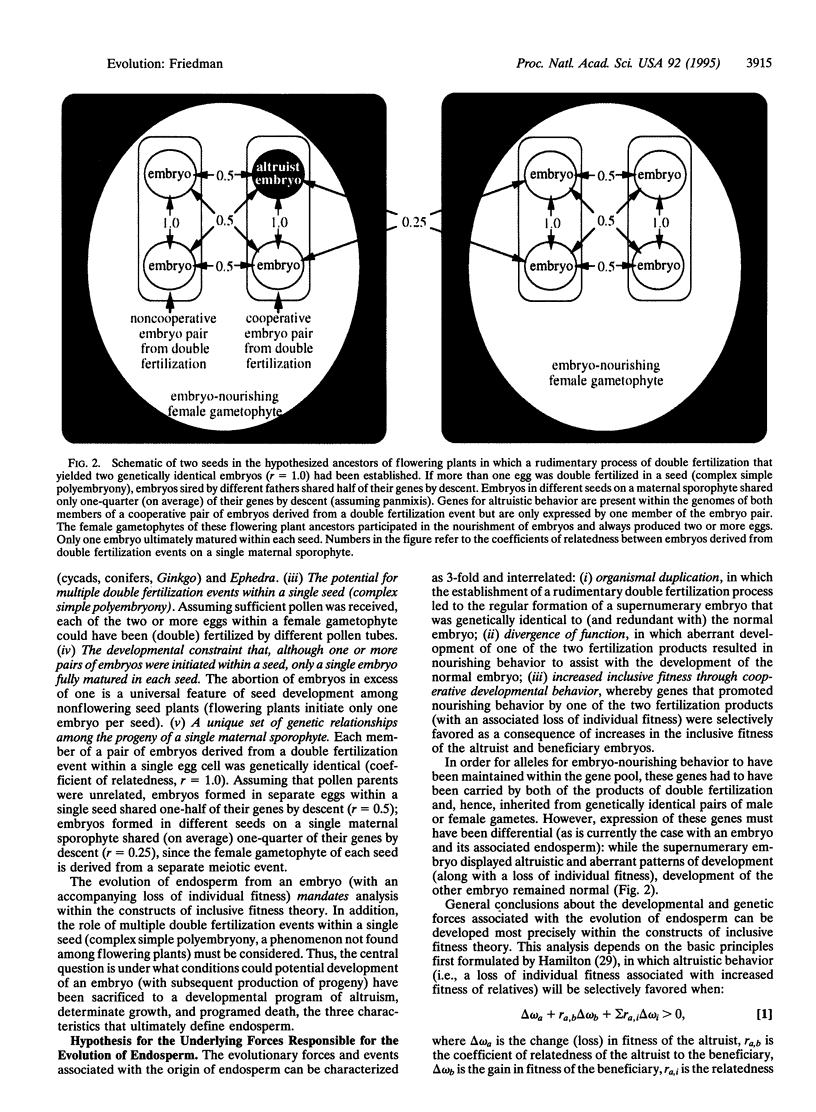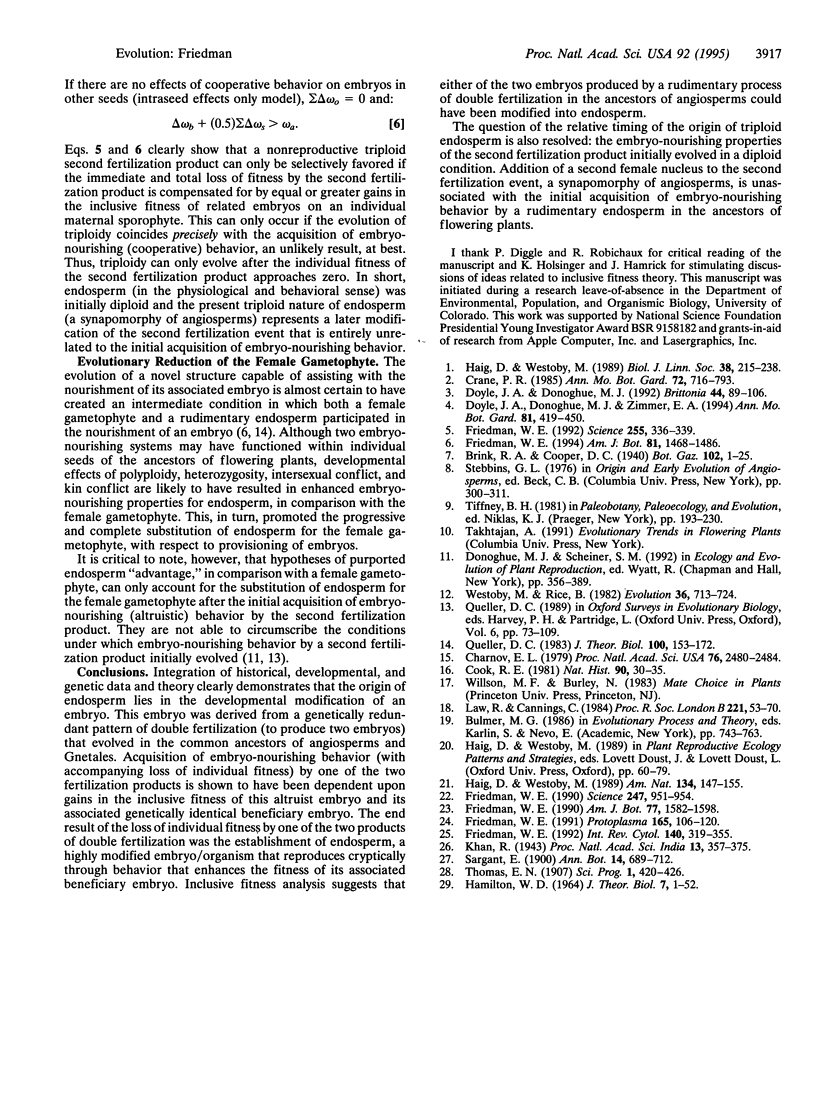Abstract
For almost a century, events relating to the evolutionary origin of endosperm, a unique embryo-nourishing tissue that is essential to the reproductive process in flowering plants, have remained a mystery. Integration of recent advances in phylogenetic reconstruction, comparative reproductive biology, and genetic theory can be used to elucidate the evolutionary events and forces associated with the establishment of endosperm. Endosperm is shown to be derived from one of two embryos formed during a rudimentary process of "double fertilization" that evolved in the ancestors of angiosperms. Acquisition of embryo-nourishing behavior (with accompanying loss of individual fitness) by this supernumerary fertilization product was dependent upon compensatory gains in the inclusive fitness of related embryos. The result of the loss of individual fitness by one of the two original products of double fertilization was the establishment of endosperm, a highly modified embryo/organism that reproduces cryptically through behavior that enhances the fitness of its associated embryo within a seed. Finally, although triploid endosperm remains a synapomorphy of angiosperms, inclusive fitness analysis demonstrates that the embryo-nourishing properties of endosperm initially evolved in a diploid condition.
Full text
PDF




Images in this article
Selected References
These references are in PubMed. This may not be the complete list of references from this article.
- Charnov E. L. Simultaneous hermaphroditism and sexual selection. Proc Natl Acad Sci U S A. 1979 May;76(5):2480–2484. doi: 10.1073/pnas.76.5.2480. [DOI] [PMC free article] [PubMed] [Google Scholar]
- Friedman W. E. Double fertilization in ephedra, a nonflowering seed plant: its bearing on the origin of angiosperms. Science. 1990 Feb 23;247(4945):951–954. doi: 10.1126/science.247.4945.951. [DOI] [PubMed] [Google Scholar]
- Friedman W. E. Evidence of a pre-angiosperm origin of endosperm: implications for the evolution of flowering plants. Science. 1992 Jan 17;255(5042):336–339. doi: 10.1126/science.255.5042.336. [DOI] [PubMed] [Google Scholar]
- Hamilton W. D. The genetical evolution of social behaviour. II. J Theor Biol. 1964 Jul;7(1):17–52. doi: 10.1016/0022-5193(64)90039-6. [DOI] [PubMed] [Google Scholar]



